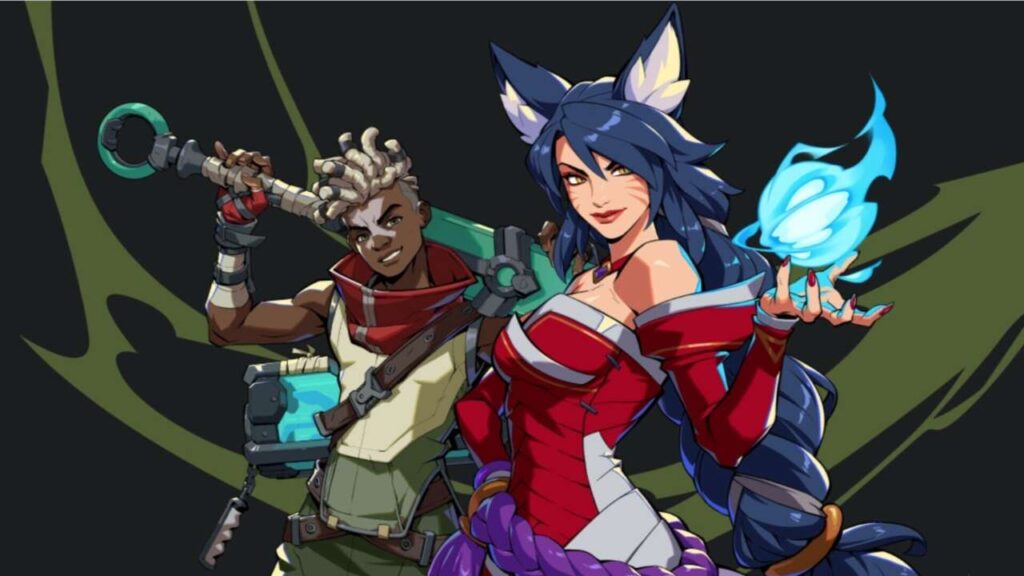As more information about 2XKO comes to light, most attention has been focused on adapting a well-known character from League of Legends into a fighting game. It makes sense – it’s always fun to see a character from a well-known series enter a new realm. This “fish out of water” feeling brings huge appeal to crossover characters such as Negan in “Tekken 7” and Banjo-Kazooie in “Super Smash Bros. Ultimate.”
However, after playing a few rounds of 2XKO at Evo 2024, I realized that focusing solely on how the game reimagined classic LoL characters was doing the rest of the game a disservice, making for a major shift in the 2v2 combat format from modifying mechanics to A philosophical shift in how we play fighting games. 2XKO is already known for reinventing the wheel, but in fact, it might be reinventing the whole damn vehicle right under our noses.
As mentioned before, 2XKO is a tag-based two-on-two fighting game – think X-Men Vs 2. Street Fighter and its ilk – The cast of characters is made up of champions from Riot’s hugely popular MOBA League of Legends. Our demo has six playable heroes: Ahri, Braum, Darius, Ekko, Illaoi, and Yasuo.
Starting with the character select screen, we see a big change: when Riot says “2v2” in 2XKO, they don’t just mean “two characters against two characters.” Each match supports up to four players at a time, with each player controlling a champion. This means that any given match could have any of the following scenarios:
- Team A and Team B have a human player controlling the two champions on the team.
- Team A and Team B have two human players, each assigning themselves a specific champion.
- Team A has one human player controlling two champions, while Team B has two human players, each assigned a champion, and vice versa.

From a competitive perspective, this creates an interesting new level of strategy. One brain controlling two different characters presents its own set of challenges, but going up against a team of two human players, each of whom may have their own specific style and strategy, is another story entirely. It already raises interesting questions about the future, such as whether 2XKO events will allow players to register as a single representative or as a team of two in the same tournament, and how this will work in real time.
The character select screen also offers fuses that can be selected to add extra benefits to your team. Pulse – the modern control version of 2XKO – was recommended to us during the demo, but we also got to see Double Down, which allowed us to combine each character’s ultimate attack into one giant move, and 2X Assist, which provides support for Roles provide more options when called upon. We focus on the Pulse option in most races, but trying out 2X Assist added some additional and useful tools to our toolbox.
Once the teams are confirmed, 2XKO’s core gameplay will be very familiar to die-hard fighting game players. One character from each team is on screen at a time – you can summon your partner character at any point during the match for a brief assisting action, and both characters on one side must lose all health to complete the round Contest. Each game feels slower and more methodical than we’ve come to expect from a game like Marvel Vs. Capcom 3, but at least for the purposes of this preview, we think that’s a positive – we’re trying to learn the ins and outs of the game, and the blazing speed is only going to get in the way.

However, there is one noteworthy and interesting change to the core format worth mentioning. In previous tag-based fighting games, when a character lost all health points, they were incapacitated for the remainder of the round/match – and that included assists. 2XKO removes this limitation, allowing players to continue seeking help from the fallen character after falling.
This changes the basic strategy in the late game. For example, in MvC2 and MvC3, losing these assists puts players at a significant disadvantage, as the timing of certain assists is critical to their ability to win games, and the leading player can take advantage of these assists. Since 2XKO assists are always active, that safety net no longer applies, which will encourage back-footed players to stay aggressive.
Each character offers a full set of attacks and abilities, some of which are easier to pick up and play than others. We’ve found that the two biggest beasts, Braum and Darius, are the most successful, mainly because their playstyle is very simple: smash your opponent’s face in by any means necessary. Yasuo is also an early favorite, but his style relies less on the brute force of powerful attacks and more on mixing speed with attack power for maximum effectiveness.


Ekko, on the other hand, has huge potential, as his best combos come from his ability to manipulate position on the stage with time powers, but we didn’t get enough time to figure him out. Illaoi and Ahri belong to similar fields, both are good at space control, especially Illaoi has the ability to summon tentacles. Each of these characters has a lot to learn, and we haven’t even seen the full roster yet.
It’s clear that 2XKO is striving to be a revolutionary fighting game. While it paved new ground for the series it represented, the changes made to the core concepts, if done correctly, could have a more profound impact on fighting games as a whole. We still don’t know when 2XKO will launch, but it will be a game worth keeping an eye on for fighting game fans, League of Legends fans, and everyone in between.

